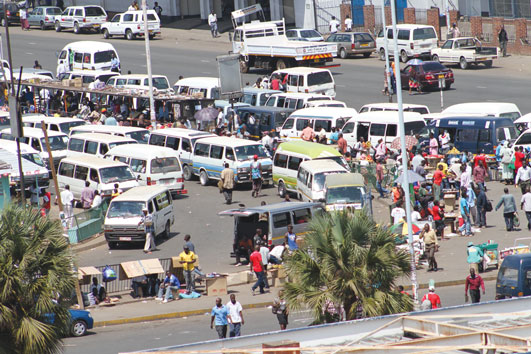- WICKNELL CHIVAYO left school at 15
- DISGRUNTLED Zimbabwe police stage uniform protest.
- MNANGAGWA wife Auxillia drops charges against nine women who boed her in Manicaland
- O.J. Simpson dies of cancer , aged 76.
- South Africa ANC is the cause of ZIMBABWE troubles claims Zimbabwe opposition politician Job Sikhala
A1 Taxis To Provide High Volume Buses To Replace Harare Commuter Kombis: Roll On Zupco!

Latest full council minutes show that the local authority made the resolution on June 8, 2015, setting itself a target to introduce the buses “without any further delay”.
A1 Taxi Company will supply the buses following its successful pilot project on the City-Mabvuku/Tafara route.
This public transport system overhaul stems from Government’s plan to de-congest major urban centres by phasing out commuter omnibuses by 2016. It is expected to result in efficient and affordable transportation.
Town House and A1 Taxi Company are winding up their Memorandum of Agreement, with bus timetables, electronic ticketing and a viable pricing model being fine-tuned.
The minutes read, in part, “The Town Clerk reported that a study was carried out for the period January 2015 to April 2015 using a demo bus service provided by Scania on the Tafara and Mabvuku route to study the profitability of the bus vis-a-vis the current road infrastructure and concluded the project was viable.
“The committee appreciated the proposal as it would result in the decongestion of the city through the reduction of kombis in the city centre. The committee further underscored the need to ensure that the proposal was implemented without any further delay and mandated the Town Clerk to conclude the Memorandum of Agreement within a period of (60) sixty days from the date of approval by council.”
An official from the Transport and Infrastructure Development Ministry told The Sunday Mail that last week, international consultants discussed the National Transport Master Plan with Town House authorities.
The consultants were hired by Government to determine the plan’s roll-out, which incorporates the transport frameworks of various urban councils.
The official would not be drawn into giving further details, though indications are that the imminent introduction of high volume buses and road infrastructure informed discussions.
“We contracted an international company for the study of our national transport system and this study has already begun with urban councils being consulted,” said the official.
“Last week, the consultants met senior officials from Harare City Council and Chitungwiza Town Council over the plan we want to implement.”
Commuter omnibuses were introduced in the 1990s to temporarily complement the services of the Zimbabwe United Passenger Company whose fleet was depleted at the time.
They were to be phased out gradually with Zupco’s anticipated resurgence.
However, as the parastatal’s viability problems persisted, omnibuses have become the de facto mass transport mode, leading to congestion and chaos in major urban centres.
Harare’s 2012 Urban Planning Report states that the city has over 4 500 registered commuter omnibus operators.
And the National Transport Policy states that the design of most roads in urban areas does not conform to the rapid increase in traffic volumes.
Other road-related problems — the policy adds – include inadequate parking space; lack of maintenance and room for future expansion and vandalised or lack of proper shelter and lighting at bus stops and termini.
It proposes by-passes; ring roads and truck-inns in major areas to cater for through traffic as an alternative to radial roads that start from the Central Business District.
Further, the policy promotes “the use of high capacity transport modes such as trains/articulated buses which economically and efficiently use road space and gradually phasing out capacity less than 26 seats”.
The authorities are also working on banning omnibus imports.
University of Zimbabwe urban planning lecturer, Mr Smart Dumba said, “Government needs to implement regulatory laws that protect the metro buses from other private players in the industry.
“A deregulatory exercise on the urban mass transportation system was done in 1993 and this was one of the recommendations of the Economic Structural Adjustment Programme, Esap. If the situation is not rectified, the high volume bus system will not survive.
“There is also need to identify viable routes since not all routes are viable. For example, the City-Marlborough route might not be as profitable as the Chitungwiza–Harare route.”
Source: sundaymail